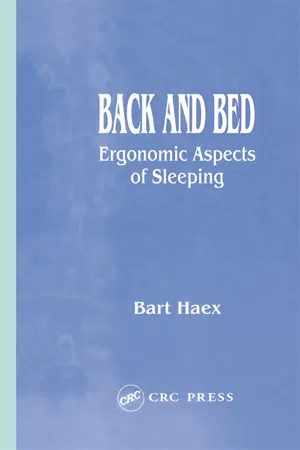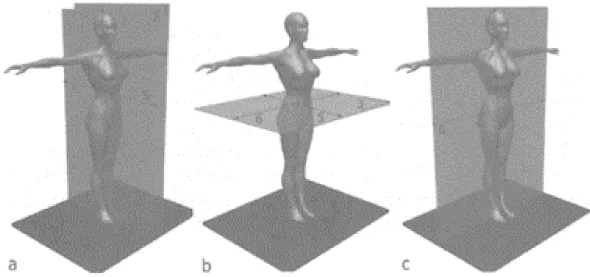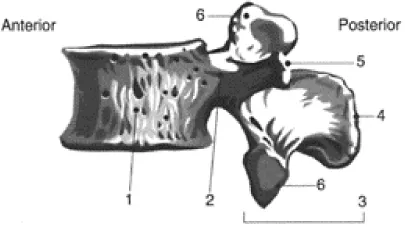
This is a test
- 280 pages
- English
- ePUB (mobile friendly)
- Available on iOS & Android
eBook - ePub
Book details
Book preview
Table of contents
Citations
About This Book
A synergy of physical, psychological, and physiological conditions affects the mental and physical quality of sleep. Although much has been written about this issue, little has been founded on actual research, until now.Back and Bed: Ergonomic Aspects of Sleeping is the first book to scientifically attribute the relationship between ergonom
Frequently asked questions
At the moment all of our mobile-responsive ePub books are available to download via the app. Most of our PDFs are also available to download and we're working on making the final remaining ones downloadable now. Learn more here.
Both plans give you full access to the library and all of Perlego’s features. The only differences are the price and subscription period: With the annual plan you’ll save around 30% compared to 12 months on the monthly plan.
We are an online textbook subscription service, where you can get access to an entire online library for less than the price of a single book per month. With over 1 million books across 1000+ topics, we’ve got you covered! Learn more here.
Look out for the read-aloud symbol on your next book to see if you can listen to it. The read-aloud tool reads text aloud for you, highlighting the text as it is being read. You can pause it, speed it up and slow it down. Learn more here.
Yes, you can access Back and Bed by Bart Haex in PDF and/or ePUB format, as well as other popular books in Technology & Engineering & Industrial Engineering. We have over one million books available in our catalogue for you to explore.
Information
1 Which Ergonomic Factors Affect the Quality of Sleep?
A combined action of physical, physiological, and psychological conditions affects the mental and physical quality of our sleep. These conditions should, however, not be considered apart from each other, since physical factors can easily influence the mental quality of sleep and vice versa. Furthermore, physiological reactions of the human body are often a response to the physical condition of the body in its environment. As a result, many of the different aspects of sleeping that are described in this chapter are closely related to each other.
The first section of this chapter gives an overview of the most important ergonomic factors affecting the quality of sleep. The focus will, however, lie on physical factors, such as the mechanical properties of a mattress. At a later stage, the underlying determinants of these ergonomic properties will be discussed, including the influence of different types of body support and different postures (see Chapter 2).
The most important and therefore most emphasized environmental component is the sleep system (i.e., mattress+support structure+head cushion) we are “lying and relying” on. It mainly affects our physical condition during the night and, consequently, during the day. A proper sleep system has to fulfill many needs, depending on personal requirements, and has to be appropriate for different sleeping postures. Most authors consider a resting place being economically justified when the entire musculoskeletal system is able to recuperate well: muscles have to relax while the unloaded intervertebral disks are rehydrating. Due to an insufficiently adapted sleep system or an incorrect sleeping posture the human body, especially the vertebral column, is often supported unsatisfactorily, involving low back pain—one of the most compelling problems in the industrialized world (Hildebrandt, 1995)—or sleeping disorders in general. Despite a growing consciousness of back problems, this is still the case for many chairs, couches, and beds that are available on the market. The physical properties of a sleep system, which largely determine its support qualities, will therefore be discussed in detail.
Next to these physical factors, which are for the larger part external factors situated “outside” the human body, the physiological reaction of the human body to this physical environment has a considerable influence on the quality of sleep. Despite this apparent link, physiological reactions are often considered to be “subjective,” possibly because they are often difficult to quantify or to objectify due to the lack of appropriate measurement equipment. They should, however, not be overlooked when advising an appropriate sleeping environment to an individual; next to a house dust mite or latex allergy, other limiting constituents—like respiratory problems or excessive sweating— make it virtually impossible to ignore these physiological reactions. These issues are described in the second section of this chapter. Also, psychological factors, such as the associations the mind makes before going to sleep, will be discussed in brief (see Section 1.3).
Finally, an optimal sleeping environment has to be chosen by assigning different weight factors to these qualities, depending on the objectives that have to be fulfilled for an individual. This choice does not only depend on individual characteristics, but also on cultural differences between population groups. One must also keep in mind that most of these factors do not withstand the pressure of time: sleep habits evolve from generation to generation, as do the mechanical properties of a mattress (even a fatigue-resistant mattress will lose 10 to 15% of its elasticity after 10 years). The fourth section of this chapter stresses the cultural differences and history-dependent aspects of sleeping.
1.1 Physical Factors
When concentrating on the development of sleep systems for the prevention of back problems, mechanical properties (especially back-support qualities) are more significant than nonmechanical characteristics (e.g., heat transport), which implies that mechanical properties (e.g., mattress elasticity) need to be optimized within the limitations posed by nonmechanical preconditions (e.g., high perspiration of an individual). Within mechanical objectives, back-support qualities are considered to be primary, keeping in mind that peak values for other parameters (e.g., pressure peaks) should be avoided. Only in cases involving applications injured people, other issues come first: pressure-relieving qualities become of prime importance in case of hospital applications. When concentrating on the development of sleep systems in general, mechanical properties should be optimized within the limitations posed by nonmechanical preconditions.
At first sight, material properties of a sleep system seem to be a question of personal preference. In reality, they should be adjusted to personal needs in an objective way, because they are the underlying determinants of most physical ergonomic features (e.g., spine support). Heavier persons, for example, need a firmer mattress in order to prevent the pelvic girdle from sinking too deep into the mattress. Materials therefore have to be developed and combined in order to optimize general sleep system characteristics. Standardized tests are able to describe the most relevant properties: mattress elasticity, hysteresis, and density. These material properties determine several physical targets: material elasticity should guarantee a correct support of the human body, hysteresis should be minimized to avoid exaggerated energy consumption while moving, and material density mainly affects fatigue resistance of the mattress itself. The physical targets are described first in this chapter; the underlying properties will be illustrated in detail later (see Chapter 2).
1.1.1 Spine Support
It is justified to consider back injury as a social problem; only a few people (20%) are never confronted with it. Low back pain is often caused by overloading the spinal column (Hayne 1984), for example, by carrying heavy loads, by making brusque movements (Mannion et al. 2000), or by adopting an incorrect posture for a long time. Although prolonged bed rest should be avoided (Ernst 1991), natural sleep may have a healing effect on low back pain (Beaumont and Paice 1992). If the spinal column is unloaded during the night and if it is supported in its natural, physiological shape, it should be able to recuperate from daily activities. Therefore, it is important that every person sleep on an adequate combination of a mattress, a mattress support, and a pillow (Idzikowski 1999). Since both body dimensions and body weight distribution have an important influence on the position of the vertebral column on a sleep system, every person should have an individually adapted sleep system. In practice such is not possible. People will therefore be subdivided into population classes, which will be discussed later (see Chapter 5).
1.1.1.1 Anatomy of the Spine
This paragraph briefly discusses the most relevant terminology and spinal anatomy that are used later in this work. First, commonly used body planes and axes are defined: Figure 1.1a illustrates the sagittal plane (1) and the medial sagittal plane (2) subdividing the human body in two equal partitions. Figure 1.1b marks the transverse plane (3), and Figure 1.1c defines the frontal (4) plane. Sagittal (5), transverse (6), and longitudinal axes (7) are marked. Further, anterior alludes to the front side of the human body, posterior to the opposite side; proximal denotes close to the head and distal at a greater distance from it; medial denotes close to the medial sagittal plane and lateral at a greater distance from it.
The musculoskeletal system of the trunk (illustrated in Figure 1.2) consists of soft tissue (muscles, ligaments, intestines, etc.) and hard tissue, namely the vertebral column (1), the rib cage (2), and the pelvis (3). The vertebral column has the difficult task to give the trunk both rigidity and mobility and is, therefore, its most vulnerable part. The rib cage and the pelvis produce higher trunk rigidity. The rib cage consists of 12 pairs of ribs, as shown in Figure 1.2 in a lateral and posterior view. Each rib is connected to a thoracic vertebra by a hinge joint and to the sternum by a flexible cartilage bone joint, enabling rib motion.

FIGURE 1.1 Commonly used body planes and axes.

FIGURE 1.2 Lateral and posterior view of the trunk skeleton.
The vertebral column (columna vertebralis) consists of 24 rigid vertebrae separated by soft intervertebral disks (disci intervertebrales). Figure 1.3 illustrates the vertebral column in two different views. The cervical vertebrae are small and support the head; the upper two have a slightly different shape to permit movements of the head. The thoracic vertebrae or trunk vertebrae are connected to the rib cage. The lumbar vertebrae are rather large since body weight and motion heavily load them. The sacrum consists of five merged vertebrae and the coccyx. The sacrum is connected to the pelvis by two sacroiliac joints.

FIGURE 1.3 Different parts of the vertebral column.
The vertebral column has a physiological curvature to intercept the shocks produced by body motion and to enable the vertebrae to support the weight of the upper body. In a sagittal projection a normal vertebral column has four bends (Figure 1.3): a forward neck curvature (cervical lordosis (1)), a backward thoracic curvature (thoracic kyphosis (2)), a forward waist curvature (lumbar lordosis (3)), and a backward sacral curvature (sacral kyphosis (4)). The lumbar part of the vertebral column always moves together with the pelvis, since the most distal lumbar vertebra (L5) is connected to it.
The hard tissue of an individual vertebra (see Figure 1.4) consists of a vertebral body or corpus at the anterior side (1), a vertebral arch in the middle (2) and a spinal process, facet joints, and transversal processes at the posterior side (3). The spinal process (processus spinosus) is the largest process on the vertebral arch and is oriented backward (4). The transversal processes (5) are oriented perpendicularly to the presented view. The four remaining processes on the vertebral arch are connected to corresponding processes on the upper and underlying vertebra: they form so-called facet joints (6) enabling a controlled vertebral motion.
Facet joints are kept together by a capsule and ligaments (1) being part of the vertebral soft tissue as illustrated in Figure 1.5. Further, every vertebra has an aperture in between its vertebral body and its vertebral arch. When vertebrae are placed on top of each other, the combination of all of these openings constitutes a bony tunnel: the vertebral canal (2). In this canal the spinal cord—the vulnerable connection to the brain—is situated.

FIGURE 1.4 Hard tissue structure of a vertebra.

FIGURE 1.5 Sagittal cross section of two lumbar vertebrae.
Between two vertebral bodies, an intervertebral disk (discus intervertebralis) is situated, functioning as a shock damper and contributing to the stability and mobility of the vertebral column. By exception there is no intervertebral disk situated in between the first and the second cervical vertebra. The most important forces damped by the intervertebral disk are those acting on the back during daily activities: walking, running, jumping, etc. On the outside, it is composed of layers of concentric fibers consisting of tough tissue, being the annulus fibrosus (3). These fibers surround a jelly core, being the nucleus pulposus (4). The annulus fibrosus absorbs the shocks, which the intervertebral disk is exposed to, by enduring tensile forces, pressure, and shear forces. The intervertebral disk is connected to the vertebra by a cartilaginous cover (5) at the end plates of the vertebral bodies.
Water constitutes 80 to 85% of an intervertebral disk. When loading the vertebral column, part of the fluid of the intervertebral disk will be lost. Due to annulus dehydration, an intervertebral disk will lose between 6 and 13% of its core fluid when body weight is loading the vertebral column for four hours. In a horizontal position—as is the case during sleep—the intervertebral disks are unloaded and are able to recuperate fluid (rehydrate). This effect causes human beings to elongate approximately 1 cm during sleep.
Ligaments obstruct extreme movements, stabilize the vertebral column, and protect the underlying structures. At the anterior side, all vertebral bodies are connected over the entire length of the vertebral column by a wide and very strong ligament, the ligamentum longitudinale anterius (6), which protects the column against extreme backward movements. The ligament is connected to the intervertebral disks and the middle part of the vertebral bodies. At the posterior side of the vertebral bodies, a narrow and less strong ligament, the ligamentum longitudinale posterius (7), connects both the intervertebral disks and the vertebral bodies, forming the anterior surface of the spinal cord. Finally, ligaments connect the vertebral arches of successive vertebra (8), the processi spinosi of successive vertebra (9), and the processi spinosi over the entire length of the vertebral column (10). All ligaments are strongly innervated and therefore can be the cause of (non-) local pain.
All vertebrae, connected by ligaments, constitute a flexible vertebral column. This column is, however, not able to preserve any trunk position by itself. Trunk muscles— both back and abdomen muscles—add an im...
Table of contents
- Cover Page
- Title Page
- Copyright Page
- Preface
- Introduction
- 1 Which Ergonomic Factors Affect the Quality of Sleep?
- 2 Bed Type Variety—Sleeping Posture Diversity
- 3 How to Measure Spinal Alignment
- 4 Spinal Alignment: Computer Simulations
- 5 The Impact of Custom-Made Bed Design on Back Support
- 6 Guidance to the Optimal Bed
- Conclusion
- Final Word